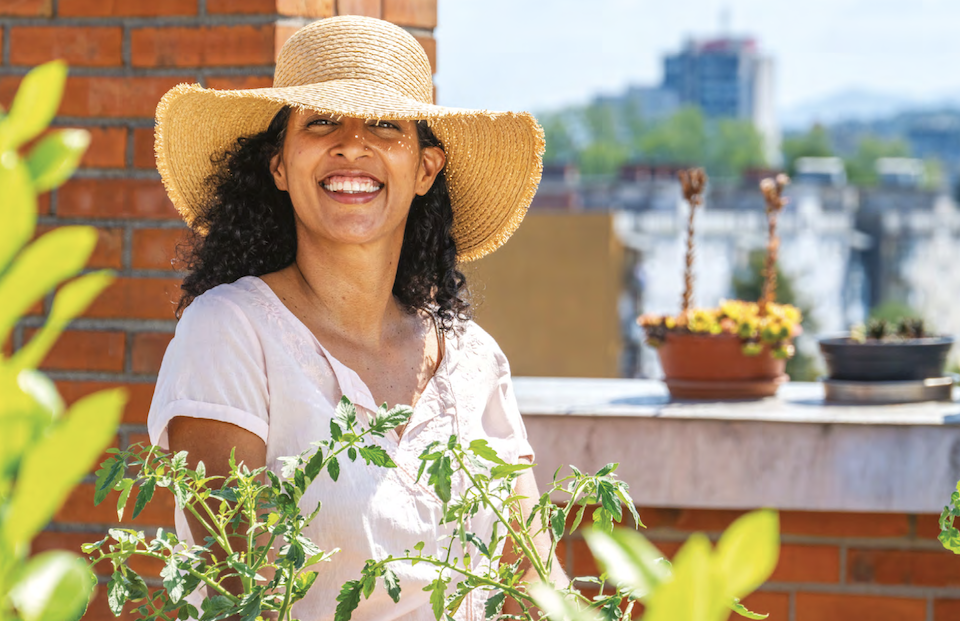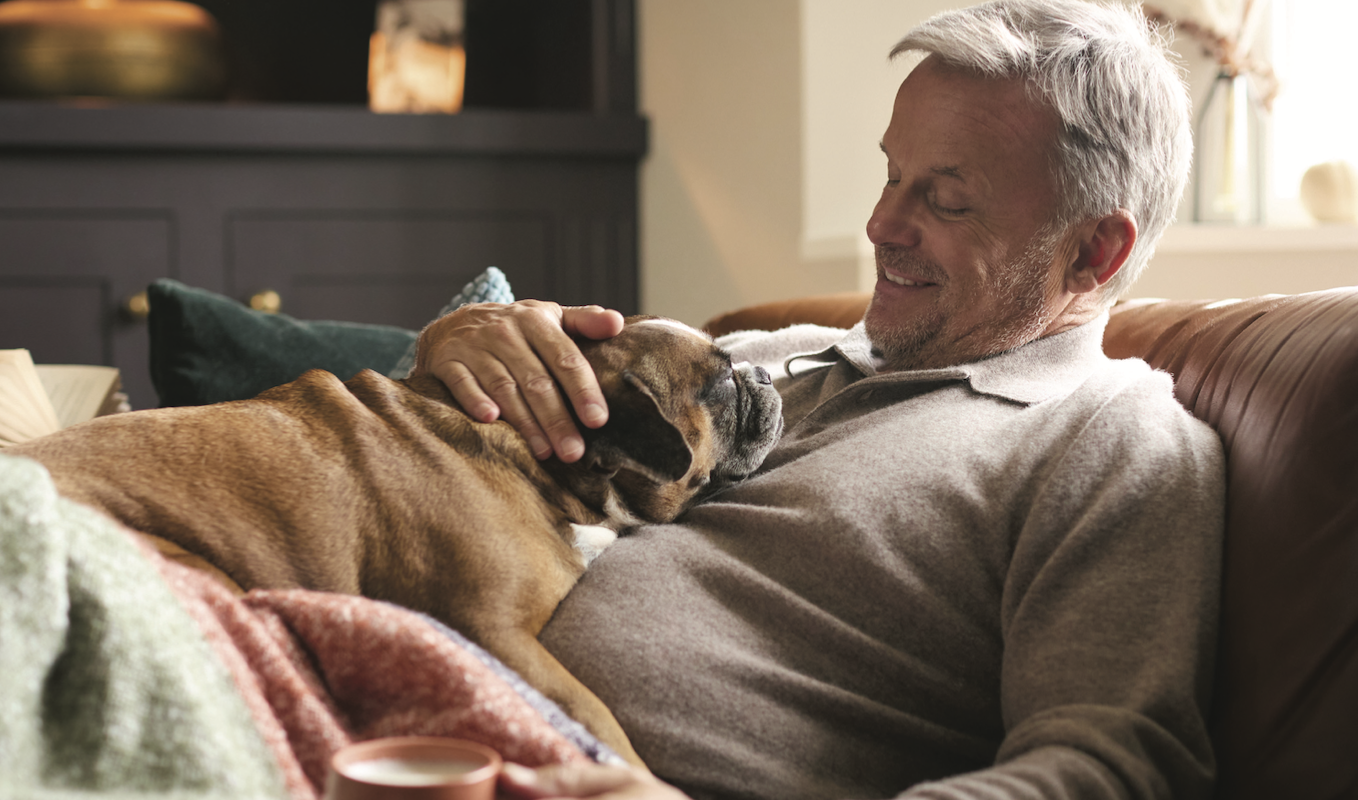By Wendy Haaf
Protecting yourself from the hazards of summer weather simply takes planning and paying attention
Summer offers a plethora of pleasures, from gardening and golf to lazy days at the lake or the seashore. But those of us 55 or older are more susceptible to the health risks of seasonal factors such as sun exposure, extreme heat, and wildfire smoke. What measures can help you stay safe and healthy this summer while you’re enjoying your favourite outdoor pastimes? We posed that question to several experts.
Sun Safety
Skin-cancer risk increases with the amount of sun dam- age accumulated over a lifetime, and many medications can contribute to this by boosting the likelihood of sun- burn, which is the most extreme and dangerous form of sun damage. These drugs include “statins for cholesterol, certain diuretic blood-pressure medications, antibiotics, and even common pain relievers such as ibuprofen and naproxen,” says Dr. Irina Oroz, a dermatologist and Canadian Dermatology Association spokesperson in Saskatoon. Oroz recommends asking about this possible side effect when starting any new medication. Some supplements, such as St. John’s wort and gingko, also increase sensitivity to the sun.
In some studies, one common blood-pressure drug in particular—hydrochlorothiazide—has been associated with an increased risk for squamous cell skin cancer, which seems to rise with the dose and duration of use. Consequently, if you’re taking hydrochlorothiazide “and you’re someone who spends a lot of time outdoors, it’s important to discuss this medication with your doctor,” Oroz says. It may be possible to switch to one of the many different classes of antihypertensive drugs now available.
Most of us can recite sun-safety measures—such as covering up with a wide-brimmed hat and long sleeves— in our sleep, but you might be surprised to learn that as strategies go, simply trying to avoid direct sunlight doesn’t cut it. “A lot of my patients tell me they don’t wear sun- screen because they ‘stay out of the sun,’” Oroz says. However, “a study that compared using an umbrella to block the sun with using sunscreen showed that 78 per cent of the umbrella group developed a sunburn, whereas only 25 per cent in the sunscreen group were red.” Oroz stresses the necessity of not only wearing sun block but also combining sun-protection measures, since “neither an umbrella nor sunscreen completely prevented sunburn.” Two more helpful tactics: wearing ultraviolet-protection factor (UPF) clothing and checking the UV index before going outside.
As for choosing a sunscreen, price and name recognition aren’t indicators of quality. “In Canada, sunscreen is regulated, which means you can rest assured that drug- store brands provide just as effective sun protection as the more expensive brands,” Oroz notes. She recommends opting for one with an SPF of at least 30—and preferably 50. “Studies show that people typically don’t use the amount of sunscreen they should or remember to apply it exactly every two hours, so a slightly higher SPF of 50 gives you real-world protection.”
Oroz adds that if you have darker skin, or hyperpigmentation (a.k.a. sunspots, liver spots, or age spots), “tint- ed sunscreens that contain iron oxides are best because they block the visible light spectrum as well as UV, providing even better protection against pigmentation.”
Finally, if you’re heading into an area where you’ll need to protect against both sun exposure and biting bugs such as ticks and mosquitoes, the (US) Centers for Disease Control recommends applying the sunblock first. Wait 10 minutes and then spray on insect repellent. Putting the two products on in reverse order won’t provide the same level of sun protection.
Defending Against Dehydration
Several factors make people 55 or older more prone to dehydration compared to younger adults. “We know that older adults tend to get thirsty after they’re already starting to get a bit dehydrated,” explains Dr. Scott McKay, Department Head of Family Medicine at London Health Sciences Centre and chair of the Department of Family Medicine at Western University’s Schulich School of Medicine & Dentistry in London, Ont. Certain medications and chronic health conditions can affect the body’s water balance, too.
Put that together with the fact that you may not remember to regularly sip fluids when you’re busy and it’s easy to see how you might not realize you’re starting to run low. “Have a plan to make sure your fluid intake is adequate,” McKay says. “Take small amounts of fluid more frequently throughout the day rather than a large volume at once. Your body will absorb it better.” Keeping a refillable water bottle close at hand may help.
As for beverage choices, “plain water is often the best,” McKay says. For the average person, sports drinks probably carry more downsides than potential benefits. “They do provide some electrolytes, which we lose with sweating, but they also have extra sugar and calories,” he says. He suggests that people who prefer the taste of sweetened beverages such as sports drinks mix them half and half with water.
It’s also a good idea to avoid alcohol or at least limit your intake, since it can act as a diuretic, increasing urine output and thereby potentially promoting dehydration. On the other hand, there’s probably no need to give up your morning cup of tea or coffee, unless your health-care provider recommends otherwise. While caffeine is a mild diuretic, according to a 2023 review article on the current knowledge of hydration status in older adults, solid evidence indicates that coffee doesn’t have a dehydrating effect.
Minimizing Heat-Related Harms
As we get older, our bodies have more difficulty maintaining an optimal core temperature. For instance, sweat evaporating off the skin has a cooling effect, but we per- spire less as we age. “We don’t have the same capacity to dissipate heat”—either that from exposure to external heat or that generated by exercise, explains Glen Kenny, a professor and university research chair in Human Environmental Physiology at the University of Ottawa and lead investigator with Operation Heat Shield Canada. “There’s about a five per cent reduction per decade, and women have a lower capacity than men across the life- span.” At the same time, he adds, “older adults don’t sense heat as they once did.”
This adds up to an increased likelihood of serious heat illness. (Two-thirds of the 619 people who died during the 2021 B.C. heat dome were 70 or older.) But that’s not the only risk. Kenny and his colleagues have conducted trials showing that spending several hours in a hot environment can trigger sudden drops in blood pressure, which can cause dizziness and fainting and thus increase the risk for a life-threatening fall.
What’s more, some strategies that seem to provide relief from the heat offer a false sense of security. A study conducted by Kenny and his colleagues showed that “limb immersion and neck cooling don’t mitigate increases in core temperature,” he says. Other research by the same team has found that while fans offer a small benefit at moderate temperatures, once the mercury hits 33° to 35°C, they not only do not significantly lower core temperature but may in fact increase it.
Even measures that do bring core temperature down to a safe level don’t necessarily erase risk. Spending a few hours in a cooling centre can return an older adult’s core temperature to normal, but that person’s heat-regulation system is still impaired.
Kenny and other experts recommend keeping room temperatures at 26°C or below. “That reduces the level of physiological strain to a point at which you’re at least not getting elevations in core temperature,” he says. Anything above that, particularly over several consecutive days, can cause harm by putting the body under constant stress. For example, the “garbage disposal” mechanism in cells starts to become compromised, impairing normal functioning.
All of this means that staying physically active during the summer requires a little extra thought. Options include doing outdoor exercise in the cooler morning and evening hours; dividing your typical hour-long walk into two 30-minute walks at different times of the day; or going to your local community centre to work out on hot days. McKay recommends wearing light-coloured, lightweight clothing, preferably made of moisture-wicking fabric, which he says “can help your body’s natural cooling mechanism” by enhancing sweat evaporation.
Reducing Smoke Risks
Wildfire smoke poses a greater range of dangers than you might think. Certainly, older adults run a greater risk for respiratory problems when air quality is poor due to an age-related decline in lung capacity. In addition, “older people often have other conditions that put them at risk when it’s smoky outside,” says Sarah Henderson, scientif- ic director of Environmental Health Services at the BC Centre for Disease Control in Vancouver. “In patients with asthma or COPD, the airways can close very rapidly when they’re irritated, and wildfire smoke has a big impact on those people.” (For this reason, McKay recommends mak- ing sure that you regularly take any medications your physician has prescribed for these conditions. “Call your health-care practitioner if you think your breathing is getting worse.”)
Smoky conditions can affect a range of health issues. For “anyone with an underlying heart condition, we see that wildfire smoke is hard on the heart and can lead to severe cardiovascular events, such as cardiac arrest,” Henderson explains. “And we also see people with diabetes having a hard time getting their blood sugar balanced when it’s smoky outside, because the air pollution causes whole-body inflammation and that interacts with the endocrine system.”
So how do you determine when you should take measures to reduce your exposure to smoke? “In Canada, the primary way we communicate about air quality is the Air Quality Health Index, or AQHI,” Henderson says. “We encourage people to install the WeatherCAN app because they can set it so their phone will alert them at a particular threshold.” Unfortunately, “AQHI is calculated a little differently in different places,” she says. For example, in B.C., “we’ve made changes to the AQHI so it reflects the impact of wildfire smoke.” While many other provinces have followed suit, “Ontario has not yet,” Henderson says.
Another resource—aqmap.ca—skirts that problem. “That map collects all the data from low-cost sensors across the country, as well as from the government sensors, and displays them according to the B.C. AQHI,” Henderson explains. “People can also look at the smoke forecast on that website to see what’s expected over the next few days—where the smoke is expected to go based on the weather. It’s an excellent resource. I really encourage people to use it.” The site’s one drawback is that it can’t send alerts to your phone.
On smoky days, minimizing your exposure isn’t quite as simple as staying home with your doors and windows shut. “You definitely should be looking at air filtration of some kind,” Henderson says. “Commercial HEPA air filters are excellent, as long as they’re appropriately sized for the volume of air they’re meant to be cleaning. There are options made with a box fan and furnace filters that are also very good.” (To find a brochure with instructions on constructing one of these DIY devices, go to bccdc.ca and search for “wildfire smoke.”) “If you can’t clean the air in your entire home, choose one room where you spend a lot of time so you can have a safe haven,” Henderson suggests. If you look after young grandkids, such precautions are doubly important to protect their developing lungs.
If you must go outdoors, take it easy physically, Henderson says. “If you’re at rest, you’re breathing about six litres of air per minute; if you’re going for a hard run, you’re breathing about 60 litres per minute.” In addition, she adds, “consider wearing respiratory protection of some sort, such as a well-fitted N95 or KN95 respirator mask. Even a three-layer cloth mask, as long as it fits your face well, will help reduce your exposure to the smoke.”
Making strategic use of public spaces can also limit your exposure. “If you’re going shopping, a mall will have much cleaner air generally than you’d get walking along a street, because the mall has big air-handling units,” Henderson says. “If you want to exercise that day, think about going to the local community centre instead of doing it outdoors, because the community centre is going to have pretty good air quality.”
In short, the protective steps for enjoying a healthy, safe summer are fairly simple, although they do require a bit of preplanning and practice—two skills most of us have mastered by this stage in our lives.






